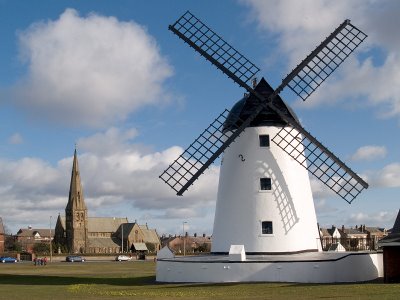The first Christian church towers of the Romanesque period had both a practical and a symbolic purpose. They housed bells which, when raised in a tower, could be heard at a greater distance. The towers were also a visual advertisement over a wide area of the location of the church, and demonstrated the wealth and power of the faith. In the thirteenth century Gothic church builders in Europe developed the spire, an upward extension of the tower that is a purely symbolic embellishment. It is clearly an aspirational structure which elaborates the raison d'etre of the earlier towers, and can be seen as a finger pointing to heaven.
It is a contentious point as to whether cities are enriched by the addition of tall structures, but I have no doubt of their benefit in villages and towns. The vertical accent or punctuation that they provide is visually satisfying. Church towers, in particular add a picturesque quality that many find attractive. Here at Lytham, Lancashire - a flat town by the sea - the windmill of 1805 and St John the Divine of the 1840s-1850s provide two tall structures that give focus to the Green, a public grassed area. What they offer to the scene is best understood by mentally removing them! When we do that we are reminded that sometimes we take for granted the qualities that tall buildings bring to our environment.
photograph & text (c) T. Boughen
